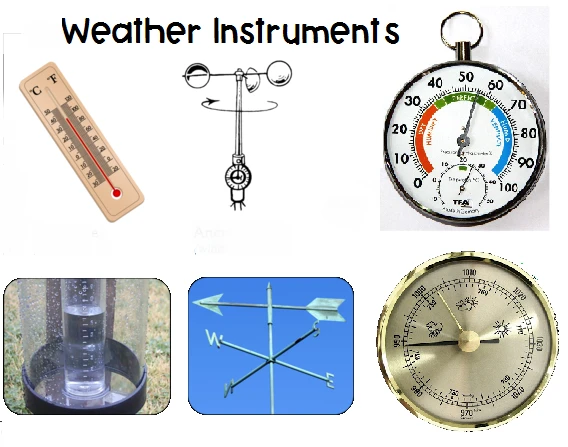
# Weather Gauges and Instruments for Accurate Measurements
## Introduction to Weather Measurement Tools
Weather gauges and instruments play a crucial role in meteorology, agriculture, aviation, and everyday life. These tools help us collect precise data about atmospheric conditions, enabling better forecasting and decision-making. From simple rain gauges to sophisticated digital weather stations, the range of available instruments continues to expand with technological advancements.
## Essential Weather Measurement Instruments
### 1. Thermometers
Thermometers measure air temperature, one of the most fundamental weather parameters. Modern digital thermometers provide quick and accurate readings, while traditional mercury or alcohol thermometers remain reliable options for many applications.
### 2. Barometers
Barometers track atmospheric pressure, which helps predict weather changes. Mercury barometers were historically important, but today’s aneroid and digital barometers offer more convenience and portability.
### 3. Hygrometers
These instruments measure humidity levels in the air. Psychrometers (wet-and-dry bulb thermometers) and electronic hygrometers are common types used by professionals and weather enthusiasts alike.
### 4. Anemometers
Anemometers measure wind speed and sometimes direction. Cup anemometers are widely recognized, while ultrasonic and vane anemometers provide more advanced measurement capabilities.
### 5. Rain Gauges
Simple yet effective, rain gauges collect and measure precipitation. Standard cylindrical gauges are common, while tipping bucket rain gauges offer automated measurement for weather stations.
## Advanced Weather Measurement Systems
### Weather Stations
Modern weather stations combine multiple instruments into integrated systems. These can range from basic home weather stations to professional-grade installations that measure numerous parameters simultaneously.
### Remote Sensing Instruments
Satellites and radar systems provide large-scale weather monitoring capabilities. While not traditional “gauges,” these instruments have revolutionized weather forecasting by providing comprehensive atmospheric data.
## Choosing the Right Weather Instruments
When selecting weather gauges and instruments, consider:
– Accuracy requirements
– Measurement frequency
– Environmental conditions
– Budget constraints
– Data recording needs
Professional meteorologists typically require high-precision, calibrated instruments, while hobbyists might prefer more affordable options with adequate accuracy for personal use.
## Maintenance and Calibration
Regular maintenance ensures accurate measurements:
– Clean instruments periodically
– Protect from extreme conditions
– Calibrate according to manufacturer recommendations
– Check for wear and damage
– Replace batteries in electronic devices as needed
Proper instrument care extends their lifespan and maintains measurement reliability.
## The Future of Weather Measurement
Emerging technologies continue to improve weather instrumentation:
– Miniaturized sensors
– IoT-connected devices
– AI-powered data analysis
– Improved materials for durability
– Enhanced remote sensing capabilities
These advancements promise even more accurate and accessible weather data in the coming years.
## Conclusion
Weather gauges and instruments form the foundation of meteorological science and practical weather monitoring. Whether you’re a professional meteorologist, farmer, pilot, or simply curious about your local climate, understanding and using these measurement tools can provide valuable insights into atmospheric conditions. By selecting appropriate instruments and maintaining them properly, you can ensure accurate weather data collection for your specific needs.
Keyword: weather gauges instruments